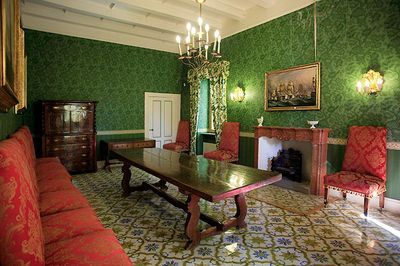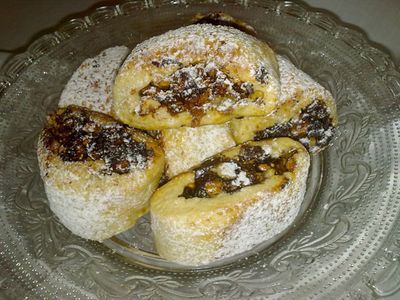From Bronte to Bront��: where Sicily meets West Yorkshire

Il "Castello" di Nelson; �� REDA &CO srl/Alamy
By THEA LENARDUZZI
To a list of overlaps between Sicily and Yorkshire ��� plentiful and vertiginous dry stone walls; the flat cap (or coppola); gratuitously calorific cakes; a quintessentially ���rugged��� landscape which can make even the most mediocre novel/TV adaptation sing ��� I can add another: the Ducea di Nelson, an impressive abode which sits on the border between the communes of Maniace and Bronte, about 60km north of Catania.
Though generously elevated to the rank of a ���castello��� by the Sicilians, the Ducea is in fact an old abbey, founded by Queen Margherita di Navarra in the twelfth century, and gifted by Ferdinando III di Sicilia (as he was known until 1816, after which, for various complicated reasons, he became Ferdinando I delle Due Sicilie), to Admiral Nelson, in 1799, in recognition of the Englishman���s vigour in fending off the French. From then on, Nelson could call himself Duke of Bronte ��� and indeed he did, on every document he signed thereafter.
The pile, along with its 200 hectares (reduced from the original 15,000), is now open for public perusal and I was lucky enough to find myself in its vicinity last week. (Which is more than can be said for Nelson himself: there is, a plaque begrudgingly concedes, no evidence of the landlord ever having visited ��� though his descendants, the Nelson-Bridports, lived there, bar a few years of Fascist appropriation, until the 1970s.)
If you can ignore the palm trees outside the bedroom windows and the scorched hills which rise up to meet Mount Etna in the south-east, the Ducea is the kind of English Country House you���d expect to find in any of the more wealthy Shires. The rooms, hung in shades of custard, scarlet or Brunswick Green (very ���Now��� in the late 1700s), are dark, almost cold in spite of the 30-odd degrees C outside, and bedecked in gilt-framed paintings of Lord Nelson and his exploits. (You'll find a pretty exhaustive slide-show of the house and parts of the grounds here.)
(An odd aside: the Scottish poet, William Sharp, who spent his final years in the house as a guest of the Nelson-Bridports, is buried in the small cemetery to the side of Nelson���s chapel. He is ��� at the time of going to press ��� the only writer I can think of who chose to write under a female pseudonym, going beyond the gender-obfuscating initials favoured more recently, to become Fiona MacLeod.)
It���s in the accompanying literature that the Yorkshire connection is spelt out, albeit with attendant it-is-saids and as-the-story goes: so deeply admiring of the Admiral was a certain Patrick Brunty, who signed up to an undergraduate course in Theology at St. John���s College, Cambridge, in 1802, that he swapped the fenian-sounding "y" of his name for a more Continental "e" ��� umlauting it to avoid mispronunciation. It���s a name he took with him, following ordination, to a small parsonage perched on a hill just outside Keighley, West Yorkshire, and which went on to echo far beyond those less decorous walls.
A poem written in 1814 to commemorate the death in battle of the Duke of Bronte, by the parson���s only son, Branwell ��� incidentally, the least successful of all the Bront��s ��� makes clear the esteem in which the family continued to hold that ���star of glory���, ���Thunder bolt of war���. (Branwell was not known for the originality of his verse.)
As far as I know, no documents ��� official or otherwise ��� have been unearthed to prove the integrity of the Bronte-Bront�� connection once and for all, but it is nevertheless a tasty morsel brought out to please the tourists (myself included). The irony over the discrepancy between visitor numbers at the Bront�� parsonage (who can arrive in Haworth on a gloriously kitsch steam train) and the ���castello��� di Bronte is something to ponder over coffee and a couple of cucchie di petralia, a local pastry which tastes like a cross between a mince pie and a Betty���s shortcake piglet. Almost as delicious as the way the brontesi might pronounce ���Keighley and Worth Valley Railway���.
Peter Stothard's Blog
- Peter Stothard's profile
- 30 followers




